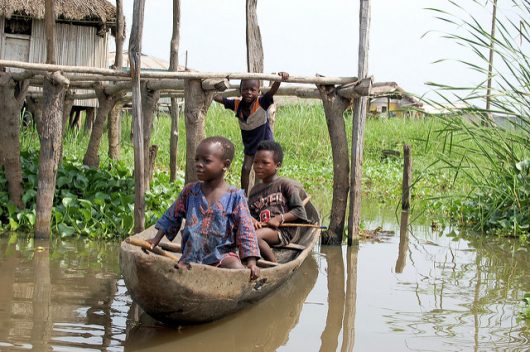Five Facts on Education in Benin

Centered between the countries of Nigeria and Togo, Benin resides on the coast of the Atlantic Ocean with a population of roughly 10 million. Education in Benin has been free for 10 years.
Benin has maintained a strong, democratic-style government since 1990 when it changed its name to the Republic of Benin. BBC News called the country “one of Africa’s most stable democracies.” Although Benin has a stable government, the country still faces plenty of issues.
Among these issues was the near-collapse of the economy in 1988, a 50 percent currency devaluation that caused inflation in 1994 and devastating floods that destroyed 55,000 homes, killed tens of thousands of livestock and displaced 680,000 people in 2010.
However, education in Benin has proved to be one of the bright spots of the nation’s domestic affairs.
Here are five facts about education in Benin:
- Education in Benin was declared free during an educational forum that took place in 2007. With free education, students are able to access Benin’s educational system that operates under 6-4-3-3-4 format. Students are taught in French, the primary language of the country, to start their educational journey by attending six years of primary school, followed by four years of junior high school, then three years senior high school, three years of a bachelor’s degree and finish with four years of a master’s degree. However, for students to pass junior high school, they must take the O-Level exam or Brevet d’Etudes du Premier Cycle: BEPC, and for students to pass senior high school, they must pass the A-level exam or Baccalauréat: BAC, which is the equivalent of a U.S. high school diploma.
- Education in Benin follows a numbered grading system. Similar to the letter-grading system, the number grading system ranges from 10 to 20 to determine a student’s level of classroom production. Averaging a 10 is good enough for a passing grade, 12 is a fairly good grade, 14-15 is a good grade, 16-17 is a very good grade and to score a 20 is excellent.
- Statistics of education in Benin demonstrate uneven gender enrollment, with the gross primary enrollment rate for boys at 88.4 percent opposed to 55.7 percent for girls, according to a survey conducted in 1996. Male students also maintain a better literacy rate between the ages of 15 and 24, with a 54.9 percent literacy rate, compared to female students who have a literacy rate of just 30.8 percent. The gap between male and female literacy rates worsens out of school, with the overall adult literacy at 40 percent, while only 25 percent of women are literate. Benin also ranks 35th out of 117 countries for having the most girls out of school, with 142,178 females not enrolled in primary or secondary school.
- State funding is the primary funding for education in Benin, and yet Benin saw a decline of the national budget towards educational spending between 1993 and 1999 when the percent of the national budget used for education dropped from 21.5 percent to 15.6 percent. However, during that same time span, primary education rose within the education budget from comprising 53 percent in 1993 to 60 percent in 1998.
- Education in Benin has also evolved into a variety of educational reforms. One of the earliest reforms took place in 1975 and was named a “new school” system, in hopes to democratize education, add more practical subjects to the curriculum and adapt to local conditions. Although the reform was beneficial for the first couple of years, the new school system reform was impacted by national and social crisis near the end of the 1980s that recorded a dropout rate of 31 percent in 1988 and 1989. Seven years later in 1996, the Government of Benin reconstructed the declaration on population policy. The impact of the revival of the national constitution was intended to support priorities in education, including progressively free-of-charge access to education, guaranteed equal opportunity for all and the fight against dropping out, especially for girls.
With all this said, education in Benin still faces an array of issues such as providing equal opportunity for education to women. Benin has made dramatic attempts to assure educational equality for all and needs to continue to put programs in place to ensure the future success of their educational system.
– Patrick Greeley
Photo: Flickr
